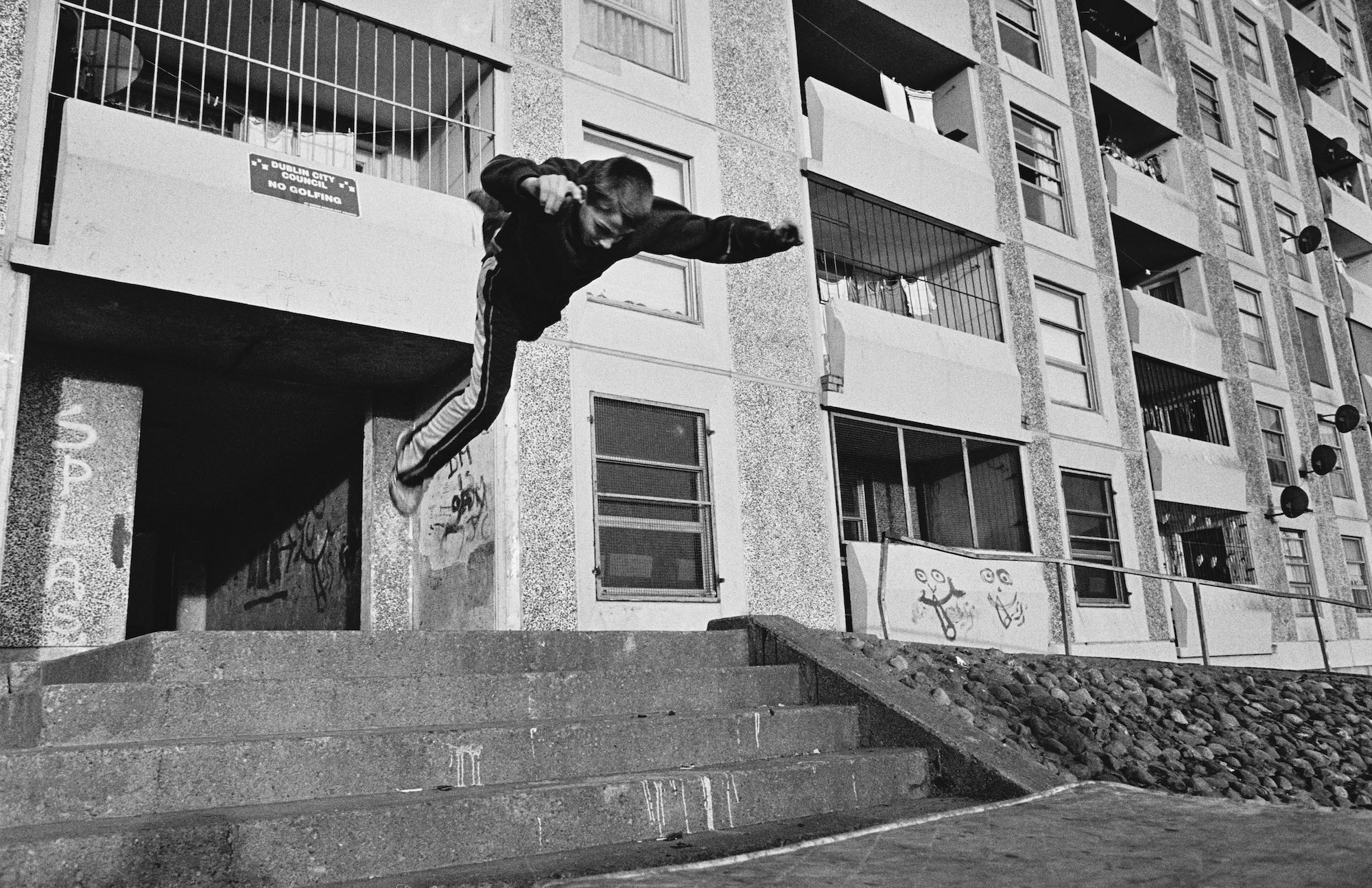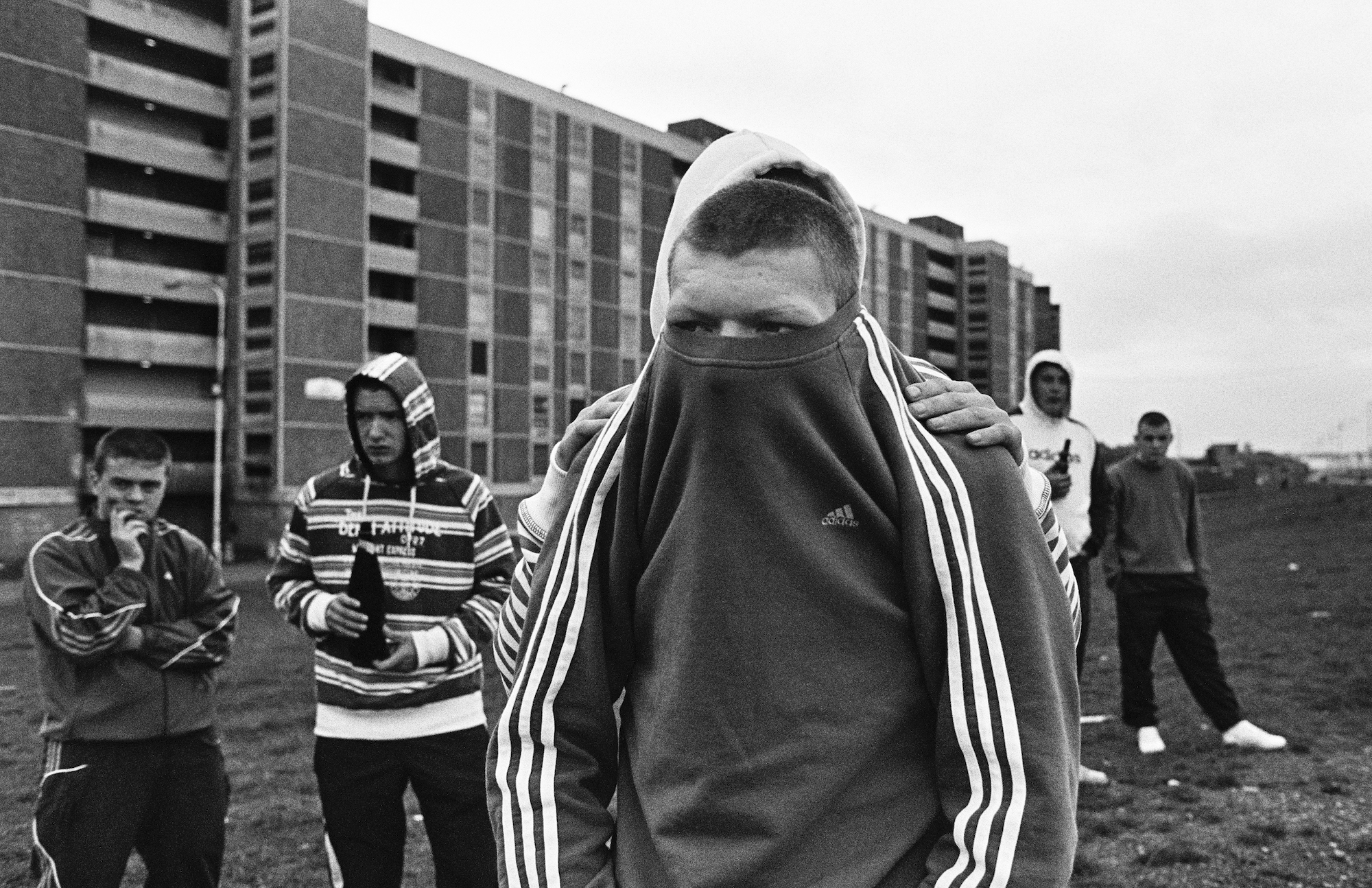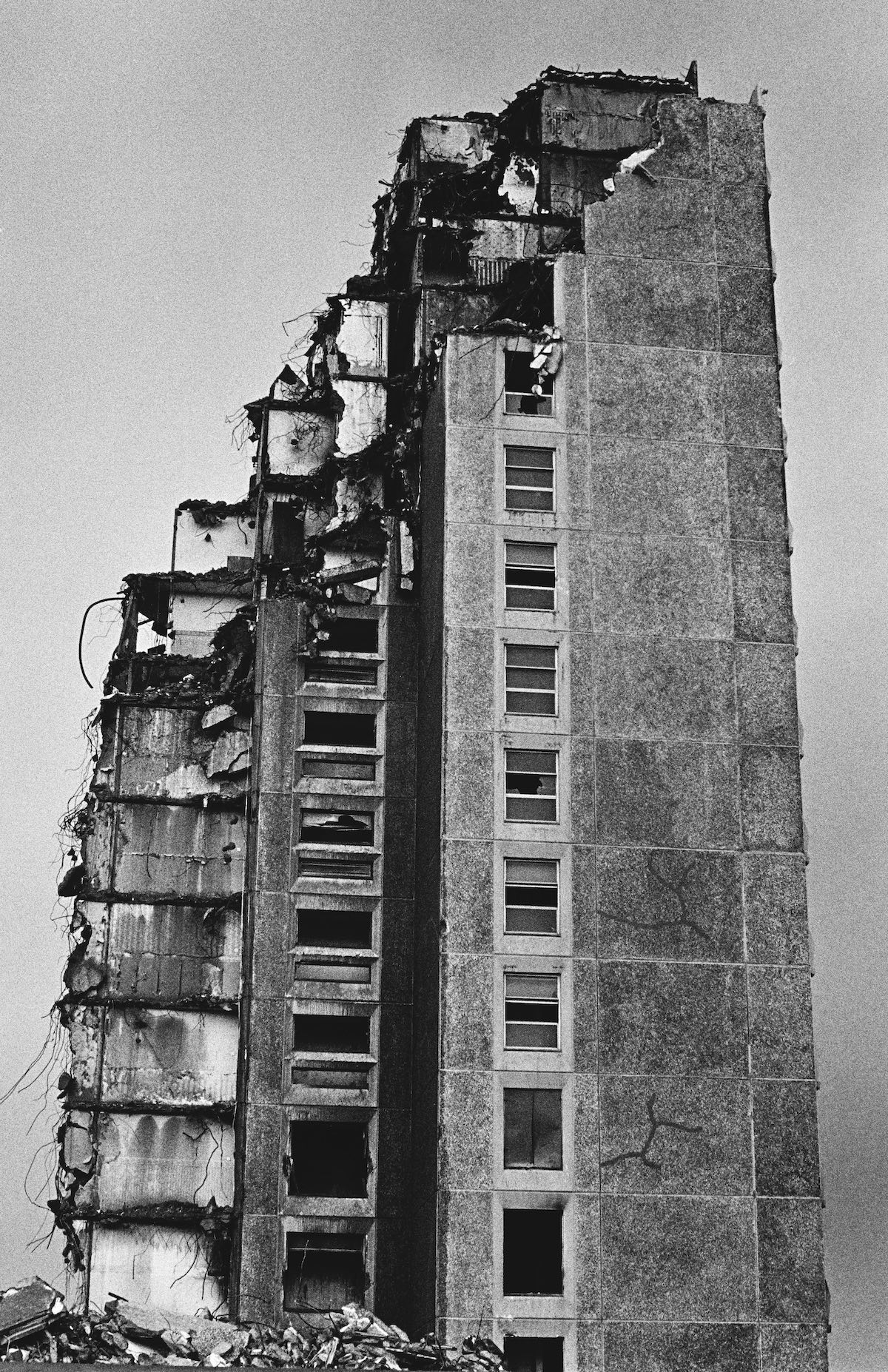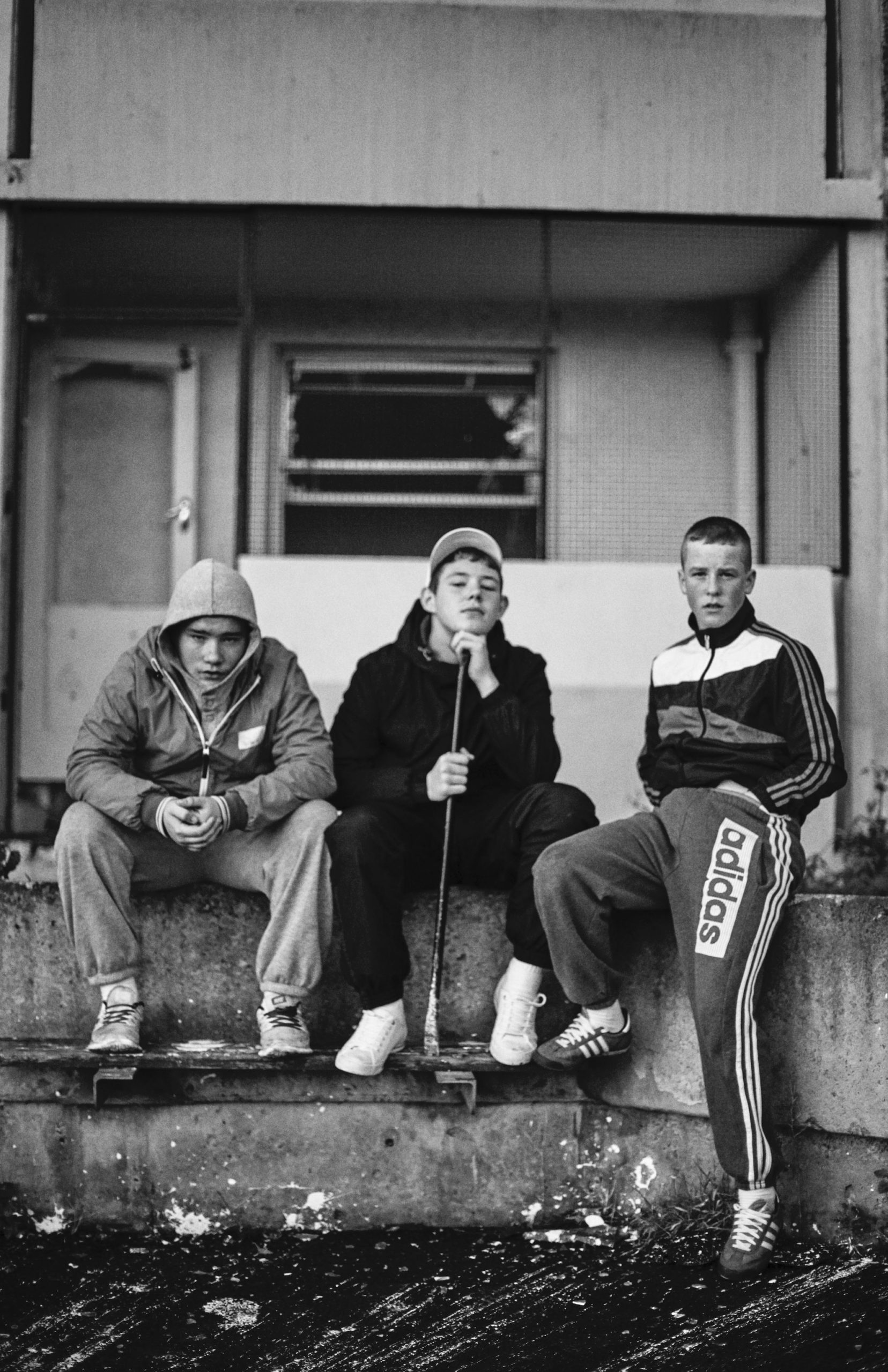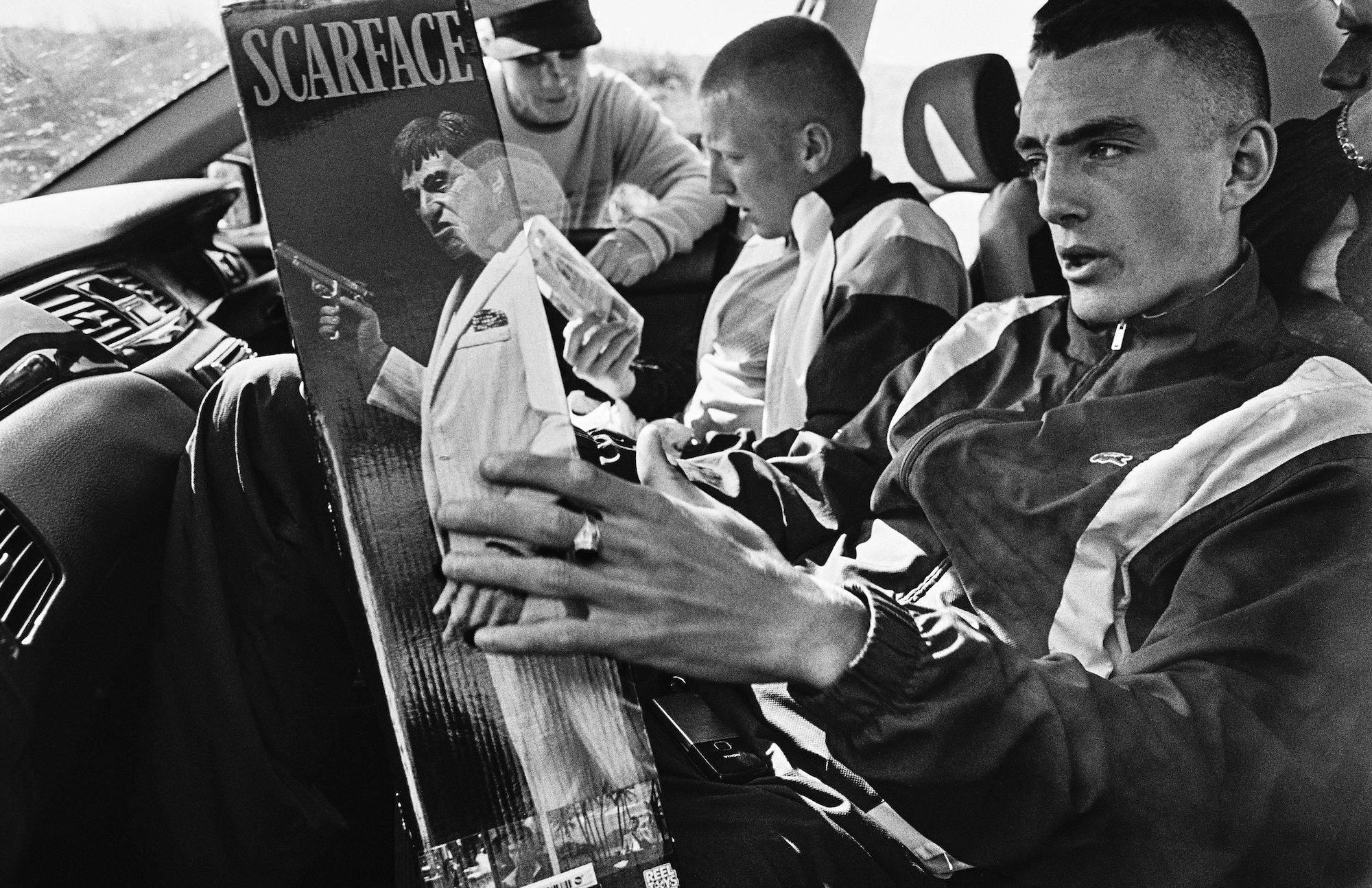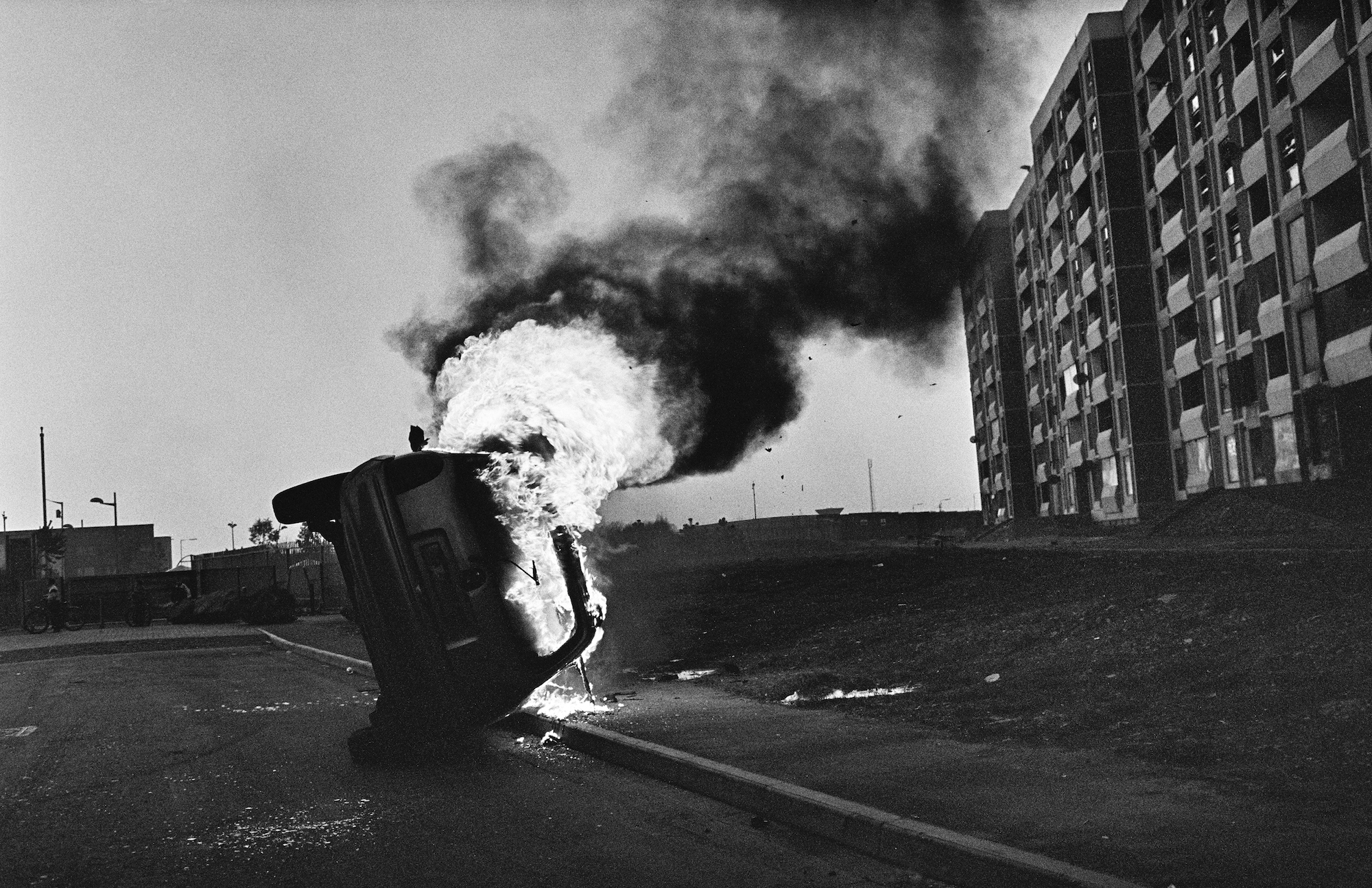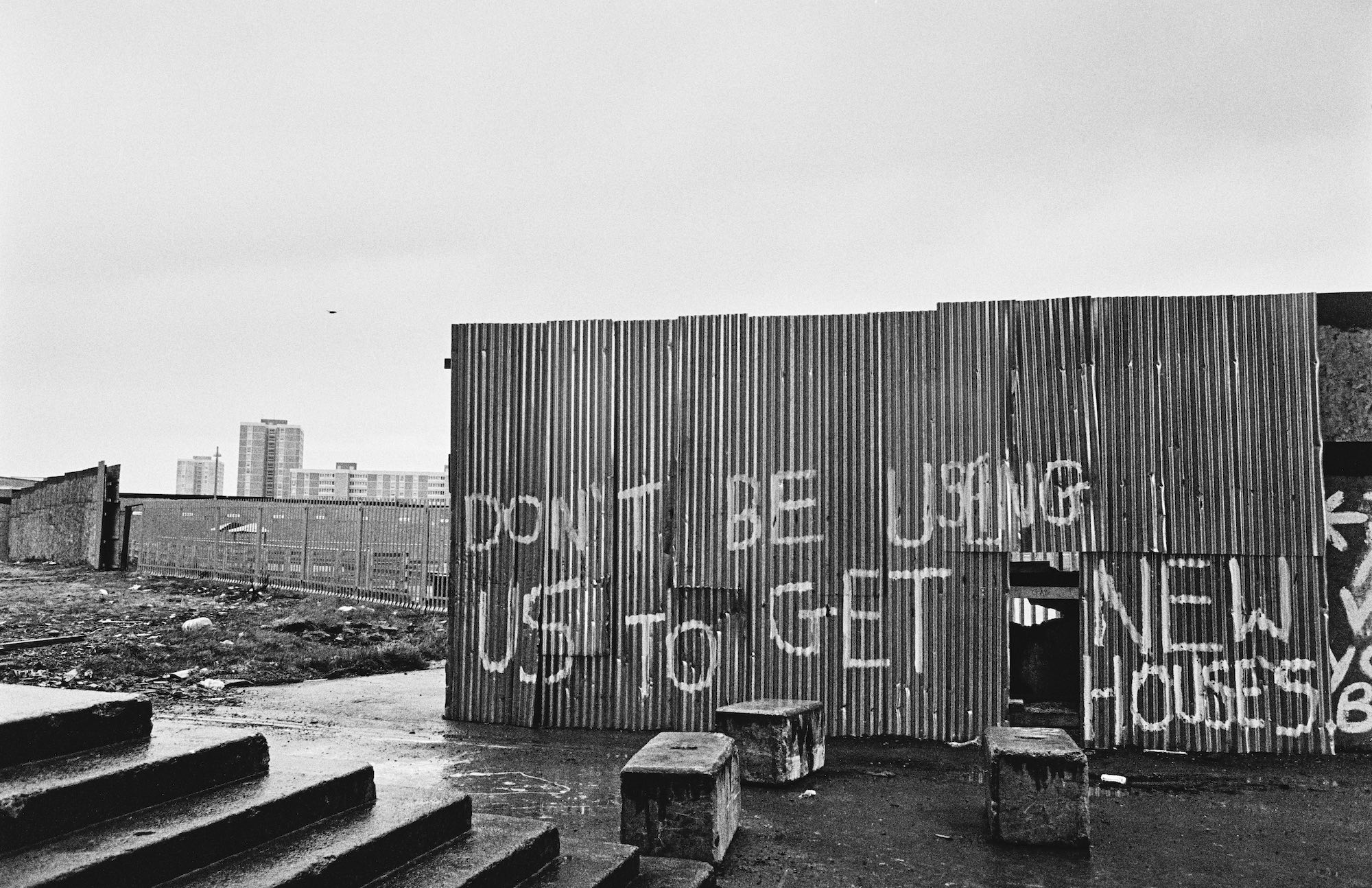“I set out years ago to capture something wild and untamed that I felt was disappearing from Irish society – the sad part is that it came true.”
Joyrider, the first photobook by Ross McDonnell, recounts the six years the Irish photographer spent documenting life in Ballymun, an infamous housing estate on the outskirts of Dublin. From 2005 to 2011, he captured a unique period in the estate’s history, characterised by youth resistance and rebellion. Amidst a backdrop of negative media attention and rampant social issues, the protagonists of McDonnell’s book – the boys of Ballymun – present a familiar tale of unbridled hedonism as an antidote to boredom and neglect. They race, climb and crash their way through the book’s pages, selling drugs, burning cars, and pulling off doors and windows as they go.
This feeling of ‘flight’ is integral to Joyrider explains McDonnell, who sought to create a duality of transgression and transcendence within the narrative. During those days, “wanton acts of violence” and vandalism were commonplace in Ballymun. The residents were resentful of the estate’s poor implementation in the 1960s, and were enraged by its proposed demolition. Relocated from their inner-city homes, they were left stranded on the periphery of Dublin, far from amenities and any sense of culture. Nevertheless, they made the estate their home, and now the government was taking it away from them. The boys watched on as Ireland entered a period of unprecedented economic prosperity – colloquially referred to as the Celtic Tiger – and they became the focus of yet another ‘regeneration’ project, nearly 50 years after the one that had led to Ballymun’s conception.
Halloween, he ventured in and met the boys who would eventually become the subjects of his narrative. “The redevelopment of Ballymun, which the photos dovetail with, was Europe’s biggest urban regeneration scheme,” says McDonnell. “The area was being radically altered as I was working there.” This period of unrest and transition is palpable in the images, which show the smashed windows and broken doors of long-since abandoned flats. Ballymun appears as a playground, a no-man’s land. They both claim it and reject it, and each act of daredevilry is a “middle finger raised to the State and its misguided social experiments”. The chapters of wild hedonism that we see throughout the book are the boys’ repeated attempts to author their own destinies, to push back against a government that creates their plight, ignores it, and then uses it as a means to their own ends.
This sentiment is captured in one of the series’ most powerful images. A shot of graffiti on a corrugated wall reveals a message that has lost none of its potency a decade later: ‘Don’t Be Using Us To Get New Houses’. This photograph gets to the heart of “the narrative behind Ballymun and its regeneration”, which McDonnell says is about “people in power telling people in the community what they want their lives to look like”. In this respect, Joyrider is timeless, its story is universal, and its protagonists can be found in every city around the world.
Joyrider is published by Thirty Nine Books
The post Set in Dublin’s notorious Ballymun estate, Ross McDonnell’s new photobook tells a tale of rebellion appeared first on 1854 Photography.

